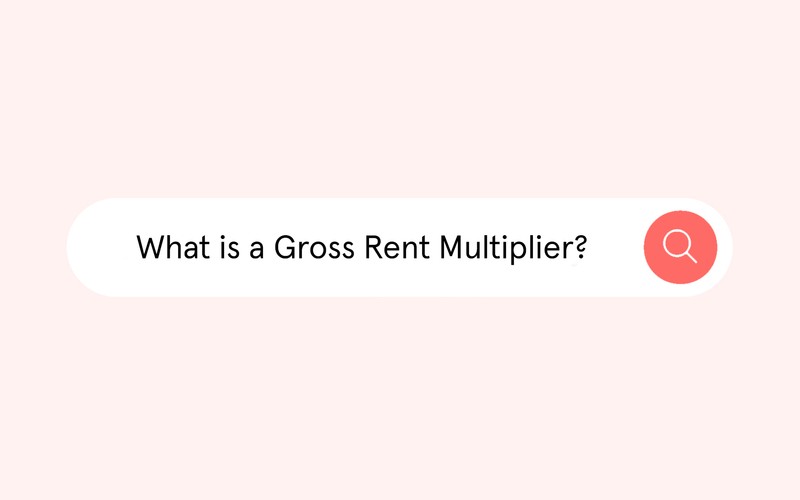There’s a lot to consider when you’re looking to buy an investment property. You want to find the best neighborhood, with good schools and low vacancy rates, to ensure the property is in high demand. And, of course, you’ll want to buy a great deal under market value to ensure it’s an income-generating property.
Investors have different investment methodologies to consider and calculations to assess a property’s potential value. Remember the gross rent multiplier! This metric can be invaluable in screening different rental property opportunities quickly and efficiently. This article will teach you everything you need to know about gross rent multiplier and how this formula can help you make smarter investment decisions.
What is the gross rent multiplier?
The gross rent multiplier, or GRM for short, is a simple equation that divides the property market value by the yearly gross monthly rental income. Commercial real estate investors often use it as a down-and-dirty way to sort properties. This number can give you a quick way to compare different properties and determine the better investment.
The gross rent multiplier formula looks like this:
Fair Market Value (or Purchase Price) / Gross Annual Rental Income = GRM
The property’s price can be used if the listing is near its fair market value, which can be determined by reading the description and looking at comparable properties.
Gross annual rent is the total rental income for 12 months, not considering any vaccines or operating expenses.
Let’s put some numbers behind the calculations. Property A has a sale price of $200,000 and rents for $1,500 per month. Property B is selling for $250,000 and rents for $2,000 per month.
We divide the fair market value by the rental income to calculate the gross rent multiplier.
Property A would be 200,000/(1,500 x 12) = 11.1.
For Property B, it would be 250,000/(2,000 x 12) = 10.4
In this example, you can see that even though Property B has a higher monthly rent, it has a lower GRM. That means that Property A considered the better investment based on its GRM score because you’re getting more rental income for your money.
Why is the gross rent multiplier important?
The gross rent multiplier can be a helpful metric for a few reasons. First, it’s a quick and easy way to compare potential investment properties, especially if you’re working in various real estate markets nationwide. Suppose you’re looking at two properties, and one has a higher gross rent multiplier. In that case, that’s usually a good sign that it’s a better investment.
The gross rent multiplier can also give you an idea of what kind of return on investment you can expect from a property. In general, the lower the gross rent multiplier, the higher the return on investment. That’s because you’re getting more rental income for your money.
Of course, the gross rent multiplier is just one metric to consider when looking at investment properties. Consider all the different factors before deciding, like the property price, budget, and investment goals. However, the gross rent multiplier is one metric that can help screen different properties and narrow your options.
What doesn’t go into the GRM calculation?
Some believe that GRM is equivalent to an investment’s time to pay off. This isn’t true because GRM doesn’t calculate the Net Operating Income (NOI). Other expenses, like vacancies, marketing, capital expenses, and property taxes, impact the time to pay off.
The GRM calculation also misses accounting for long-term appreciation or property valuation changes. And if you buy a property under the asking price, it can change the GRM.
However, the gross rental multiplier can be a fast calculation when choosing between comparable properties for deeper investigation without regard to these extra costs. Consider it a starting point. Use other methods to measure a rental investment’s profitability.
What is an ideal GRM?
The average GRM will vary between markets, as it is relative to the rental market in which the property resides. Generally, a “good” GRM falls between 4 and 7; however, this number will be different depending on the strength of the local housing market.
So, how do you figure out what’s a “good” GRM for your market? Run some calculations on similar properties for sale in that particular market. Now you have a comparable set to see if the GRM is better, in line, or above the current market.
Remember that a lower GRM usually means it’ll take less time to pay off your investment property loan.
What makes GRM different from capitalization rates?
Gross rent multiplier and capitalization (cap) rates are two metrics that are sometimes confused because they both deal with investment properties. They’re pretty different, but both are valuable for considering future cash flow.
The gross rent multiplier only looks at the gross rental income, while cap rates take into account the net operating income of a property. NOI is calculated by subtracting all the operating expenses associated with a property from the gross rental income. These could be your property management expenses, utilities, marketing, and carrying over vacancies. Cap rates don’t include debt service or mortgage payments. Unlike GRM, it’s a better measure of actual revenue and profitability.
The cap rate formula is:
Fair Market Value (or Purchase Price) / (Gross Rental Income-Net Operating Expenses) = Cap Rate
For example, if a property’s purchase price is $400,000, with a gross rental income of $42,000 but operating expenses of $14,000, the cap rate is 14.29.
Both gross rent multiplier and capitalization rate can be helpful when looking at investment properties in the commercial real estate space. Your GRM can narrow the selection of properties, and cap rates are essential for your deeper investigation.
How else can you use GRM?
In addition to being a screening tool for investment opportunities, the gross rent multiplier has several other applications.
Future Rent
It can also be used to predict future rent prices.
For example, let’s say the gross rent multiplier in your market is 10. If a property sells for $100,000, you can expect the gross rental income to be $10,000 annually.
Now let’s say you’re looking at two different properties. One has a gross rent multiplier of 12, and the other a gross rent multiplier of 15. Based on the gross rent multipliers, you can expect the property with a GRM of 12 to have lower rents than the property with a GRM of 15.
This is just a general prediction, but the gross rent multiplier can give you a good starting point when estimating future rent prices in a given market.
Fair Market Value
You can also use GRM to find the fair market value of other properties in the market. For example, suppose the average GRM of several properties in an area is eight, and those properties generate $25,000 cash flow yearly. In that case, you could ballpark what another property in the vicinity should be worth. In that circumstance, the GRM calculation would look like this: $25,000 ✕ 8 = $200,000.
Monitoring Market Changes
The gross rent multiplier can also be used to monitor changes in property value based on gross rents. For instance, if your property has a GRM of 7 and similar properties nearby have a GRM of 7.5, this suggests that you are charging a fair market rate. You are excelling at keeping tenant turnover low, optimizing operating costs, and minimizing loss of rental income.
On the other hand, if your GRM is higher than that of other similar properties, it may be time to raise the rental rate. It’s a sign that you’re offering a below-market rate.
The downside to GRM
While it’s a helpful screening tool, dive deeper into the metrics before making any real estate purchasing decisions. A property that appears to be a good investment since it has a low GRM may not be worth the purchase if there is significant deferred maintenance.
GRM fails to consider lost rental income from property vacancies due to average tenant turnover or if the property is poorly maintained and takes longer than usual to rent.
It also won’t project future gains from property valuations or how renovations could boost your asking rent. A commercial real estate space can’t predict how long it will be vacant, changes in monthly rent, or if tenants will renew their lease.
What are some things to keep in mind when using GRM?
GRM can be a helpful metric for screening investment properties, but it’s essential to keep a few things in mind when using it:
- It’s best to use GRM in markets you’re familiar with.
- Make sure you’re comparing apples to apples. When looking at different properties, be sure they’re of similar size, property type, location, and age.
- Use other screening tools in addition to GRM. Refrain from relying on GRM alone to make your investment decision. Look at the property’s capitalization rate, cash flow, and gross income multiplier.
- Understand that past performance is not indicative of future results. Just because a property had an excellent gross rent multiplier in the past doesn’t mean it will continue to do so in the future.
Applying GRM to your real estate investing
The gross rent multiplier is a helpful metric for screening investment properties. It can give you an idea of how much rental income you can expect for your money, and it can also be used to predict future rent prices in a given market. Just keep in mind that it’s just one tool in your arsenal.
Easily invest in rental properties today
Do you want an easier way to invest in rental properties? Browse available investment homes on our platform and get started today.







